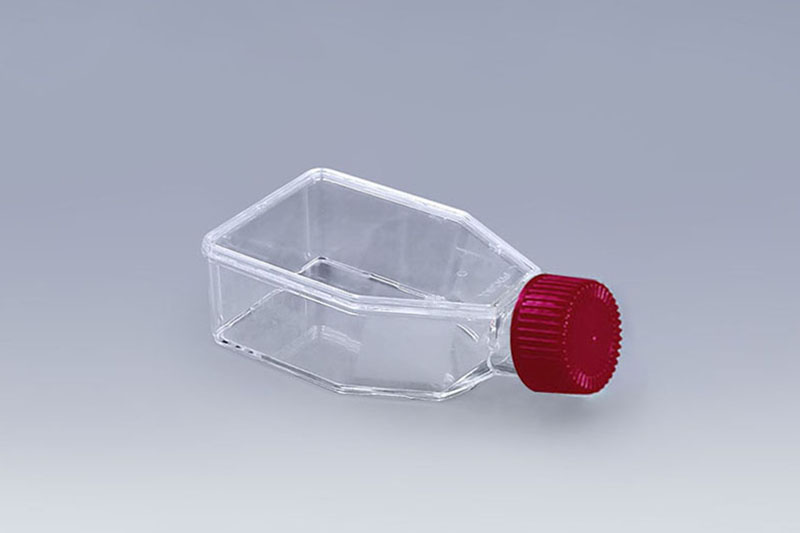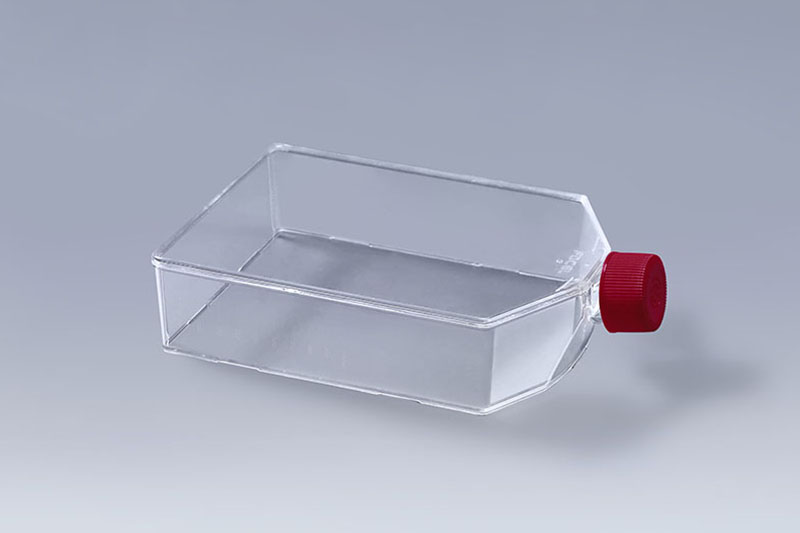Cell culture flasks are mostly used for the cultivation of adherent cells. Different from the growth of suspension cells in the culture medium, adherent cells need to grow on the surface of the container, so the cells must be digested before harvesting or passage. There are many ways to digest cells, the common ones are as follows:
1. Enzyme digestion
This is also a method that we use more in our daily life. Generally, trypsin is used for digestion, and the concentration is between 0.25% and 0.5%. The digestion time varies according to the cell type, operation method, temperature and other factors. After digestion, it is necessary to stop the digestion with serum or serum-containing medium.
2. Physical method
Without the aid of trypsin, directly pipette or use a cell scraper to digest the cells on the surface of the cell culture flask. This method can be used for cells that are firmly attached. However, it should be noted that pipetting and scraping will cause certain damage to the cells, and it is generally not recommended to use this method.
3. Freezing method
Using the principle of cell shrinkage after freezing, the cells are detached from the culture flask. This method causes little damage to the cells, and is suitable for cells that are not particularly tightly attached but are particularly delicate. Such as mesenchymal stem cells, DC cells, etc.
4. Ion chelating agent
Does not destroy cell surface molecules, only chelates with CAMs. Generally, more EDTA is used, and the concentration is about 0.02%. It acts on cells and interstitium, and also has a certain effect on intercellular space. Note that it can significantly affect pH and is only soluble in slightly alkaline conditions. Therefore, the pH should be adjusted during preparation. It cannot be finalized. Therefore, the digested cells should be washed again.
The above are several methods commonly used to digest cells in cell culture flasks. On the whole, enzymatic digestion is the most widely used method. Of course, the appropriate digestion method should be selected according to the type and characteristics of the cells.
The FAI climbed 5.9 percent year-on-year in the first 11 months of 2018, quickening from the 5.7-percent growth in Jan-Oct, the National Bureau of Statistics (NBS) said Friday in an online statement.
The key indicator of investment, dubbed a major growth driver, hit the bottom in August and has since started to rebound steadily.
In the face of emerging economic challenges home and abroad, China has stepped up efforts to stabilize investment, in particular rolling out measures to motivate private investors and channel funds into infrastructure.
Friday's data showed private investment, accounting for more than 60 percent of the total FAI, expanded by a brisk 8.7 percent.
NBS spokesperson Mao Shengyong said funds into weak economic links registered rapid increases as investment in environmental protection and agriculture jumped 42 percent and 12.5 percent respectively, much faster than the average.
In breakdown, investment in high-tech and equipment manufacturing remained vigorous with 16.1-percent and 11.6-percent increases respectively in the first 11 months. Infrastructure investment gained 3.7 percent, staying flat. Investment in property development rose 9.7 percent, also unchanged.
 English
English



















































 T25 Flask
T25 Flask T225 Flask
T225 Flask